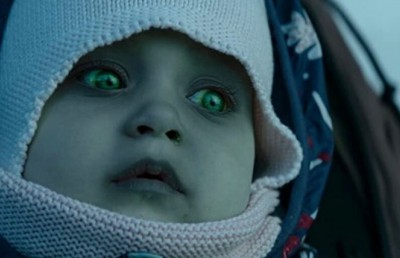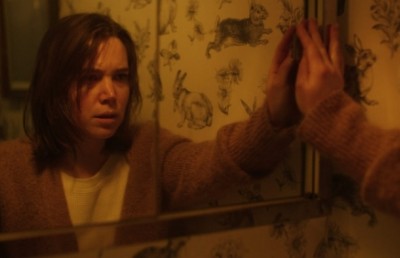We Have Fantasia at Home
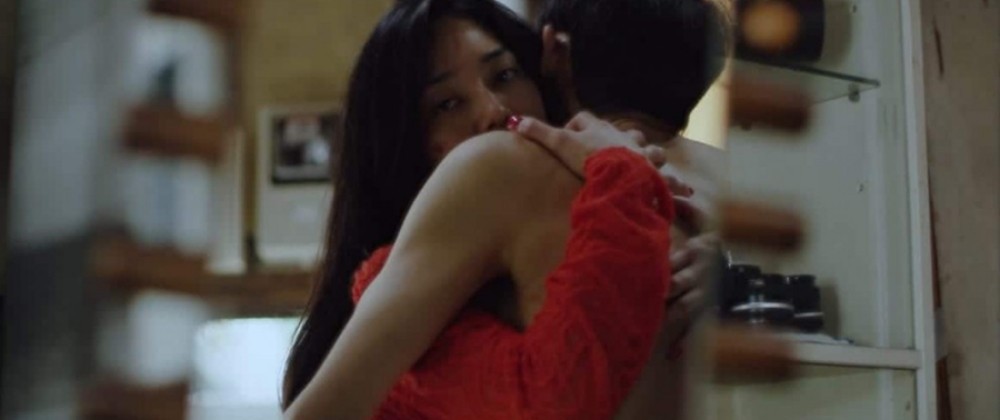
A different year calls for a different festival calls for a different write-up. In light of the global pandemic which forced all of us inside for the larger part of 2020, the Fantasia Film Festival did the only thing possible to survive, it moved online. And whilst it no doubt lost some movies in an industry that (at the time) was still largely averse to online premieres, it remained an impressive feat to shift such a massive event into an online format. No major logistical problems derailed the proceedings, the website and video players were easy to use with no lagging or drops in quality, at least on my end, making the switch to at-home viewing a painless, but bittersweet one. And whilst some decisions like setting hard schedules on certain films are debatable in their necessity or efficacy at recreating the festival experience, everything Fantasia did was done in the spirit of trying to retain its personality as a film festival.
It is therefore interesting to ask oneself what is lost, and what is gained, when a behemoth like Fantasia has to shrink itself and make its way into our homes, pluck itself down on our sofas and try to scare us away from our cellphones and daily lives. Because it must be said seeing a film on the big screen is different from watching a film at home. And seeing a film at a festival, something between a marathon and a pilgrimage of cinema, is different from seeing a film on the big screen. Festivals have something of a living, breathing rhythm to them. Watch too many bleak downers in a row and the first comedy you see will seem like a masterpiece of free-flowing lightness and mirth. Catching a few future classics on the same day can also send you to cinematic heaven, whereas the contrary will make you lament the death of cinema. Film festivals also contain stories; stories of dashing across town to catch the next film, stories of strangers met in line, stories of connections divined between disparate films in over-caffeinated trances. All of this to say that film festivals are a way to take as many movies to the face in as short a period of time as possible, yes, but they are also events that have a mind of their own that extend in and outside of theatres. And Fantasia, if nothing else, has a big personality.
Fantasia is something of a juggernaut among festivals in Montréal. It is known for its devoted fans, some even crossing oceans to come partake in the festivities, long lines stretching around Concordia buildings in blistering heat and heavy rains, and a massive slate of movies sprawled across the months of July and August. There is also something like a Fantasia experience, a kind of atmosphere only a mix of raucous genre movie lovers punch-drunk from 3 weeks of non-stop gore and horror and a certain type of lovingly-crafted paean to the cinematic gods of exploitation and cheap ingenuity can hope to create.
This text is, therefore, something of a reflection on what it means to have an horror film festival take over your living room. Will the scares be lessened by the dying light of the day filtering through the curtains or will they burrow deeper now that the calls are coming from inside the house. Was Fantasia still Fantasia inside my apartment, streaming into my laptop, itself plugged into my television? It certainly was less loud; no sound of cat could be heard over the pre-show ads. In that sense, the experience was definitely lower scaled, perhaps less exciting, but more cozy, less intimidating. A less packed schedule also meant more opportunity to give movies which in other years would not have been given a second look a chance to impress me, the price of entry now being a trip to the couch.
There is perhaps something to be said for this lower-scale set-up as many of my favourite films from the festival are low-key in their aspirations but reveal deeper truths that sit with you long after you’ve closed the window. This year was for many a time to pause and reflect on the way things are, a forced time-out from life, and the best films from this year’s program allowed just that, asking questions both concrete and metaphysical that only gained in potency from being able to see ourselves in our darkened television screens as the credits rolled. Say what you want for the big screen, but there is something to staring yourself down, dishevelled from months of confinement after a particularly moving film. So if the big losers from this switch to the home theatre were the loud, crazy Fantasia films that come to life with the roar of an appreciative audience, the films that gained the most were the small, unassuming works that might not stand out in a festival’s program notes, but manage to burrow themselves into your mind.
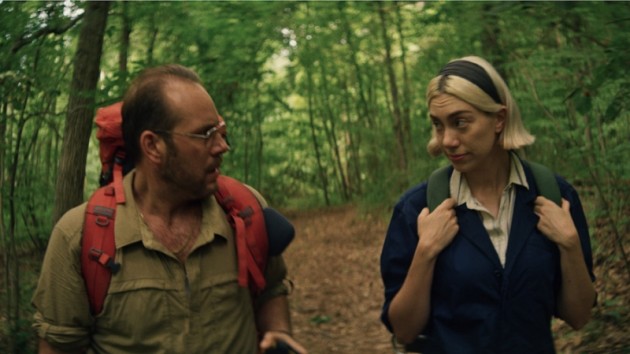
Lapsis
One such movie, Lapsis, a very smart and fleet-footed offering about our modern late capitalist hell of apps and self-employment excels at small-scale world-building, creating a believable near future upstate New York out of clever details and an understanding of the intricacies and indignities of the gig economy. Director Noah Hutton anchors his sci-fi universe with a pleasing lo-fi visual design and a tapestry of working-class characters, each a believable cog in this clever satire of the breakdown of worker solidarity in this atomized new millennium. The film tells the story of Ray, a working-class man lured by the pastel siren song of an Uber-like company where workers have to lug around wires through the forests of New York to facilitate the quantum movement of data used in light-speed stock exchanges, and his disillusionment with the job as he slowly uncovers secrets leading back to the original coder of the app. The film keeps everything believable and does not forget its characters as its aims become clearer. As big online corporations take up even more of the market as this pandemic winds down, the film seems prophetic in foregrounding the human element behind the lines of codes that more often than not get purposefully overshadowed by the cutesy, non-threatening aesthetic of Silicon Valley.
Small-scale could also very well describe perhaps my favourite of the selection; Woman of the Photographs, an impressive debut that in its own way also tackles a very modern subject in the form of a supernatural fable. Following a taciturn local photographer, whose business now mostly involves photoshopping pictures of women for dating sites, as he becomes embroiled with an Instagram model who becomes viral with the help of his virtuosic skills, the film patiently sets up a magical realist narrative where the gaze intertwines with desire in a gothic dance of death. The film’s extraordinary sound design should also be singled out for rendering the digital eerily tactile, each click of the mouse like the scalpel of a plastic surgeon. For all its more gothic affects, the movie understands the enticing nature of social media in a way that doesn’t talk down to its characters or reduces them to misogynistic caricatures. As we are forced to spend more and more of our lives online, this is another film that resonated loudly with our current moment.
Another excellent and mystifying film, Me and Me, a more complicated and mysterious take on your average body swap film, is a strange, ever-shifting concoction, switching characters half-way through and never coming to a hard conclusion. The film is wonderfully acted and as we’ve come to expect from Korean cinema, it is a skillful melange of disparate tones, filmed with verve and dedication. But the film leaves much unresolved in a way that opens it up to a variety of interpretations, which will no doubt irk some. Me and Me would have perhaps benefited from the possibility of a post-screening discussion, but as it stands it leaves one with many questions about what makes you yourself, is it the circumstances around you or something deeper. It is ultimately a meditation on what it means to radically change your life, to the point where you perhaps no longer recognize where you’ve ended up, a fitting sentiment in this day and age.
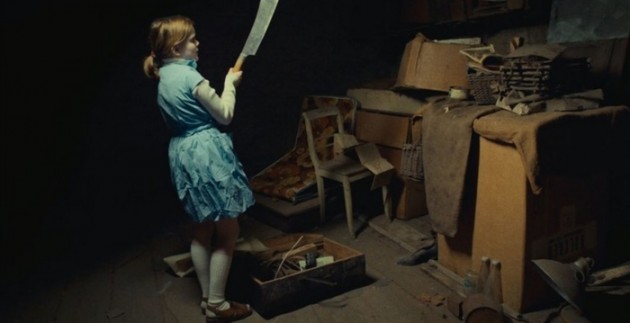
Time of Moulting
Another film which gained new dimensions by being watched at home was Time of Moulting, an effective 70 minute creeper about a goosebump-inducing Swiss family who never leave the house. The film’s eerily controlled tone and measured editing, focusing on long tableaux where the weirdness of the family seems to almost ooze from the walls was doubly effective at home, the creepy, uneasy feeling burrowing its way under the skin, the exacting compositions driving home the potent feeling of entrapment.
House horror was also well represented by The Dark and The Wicked, a well directed southern Gothic horror film about a family terrorized by a malevolent spirit. Bryan Bertino, most well-known as the screenwriter/director of The Strangers, crafts effective scares and digs deeply into the film’s rust belt setting to give a lived-in dimension to this somewhat familiar story. The film’s actors shine lending the film an heavy sense of regret and pathos, anchored in catholic guilt and its desolate middle America setting.
Less successful was Kriya, an interesting Indian horror fable whose impressive visuals centre around an old house and the spirits that populate it. Kriya fails to really frighten but brings up fascinating ideas about the clash of the modern and the traditional in Indian society as a DJ is brought to the haunted compound lured by the hope of consummating a one-night stand. The film’s main problem is that its foreboding atmosphere never coalesces into something more, leaving us with a mood piece which brings up interesting ideas without fully exploring them.
This criticism also rings true for Sleep, a German horror thriller, about a young woman visiting a small Bavarian town in the hopes of understanding why her mother suddenly fell into coma. As the traumatic past of the town slowly comes out, all linked to a fancy hotel and its domineering owner, the bounds of reality seem to break around our protagonist. As with Kriya, Sleep possesses flashes of brilliance and a strong atmosphere but fails to really impress or stand out beyond its interesting setting and capable visuals.

Changing Dreams
That’s not to say that big spectacles failed to impress. A number of films that took as their subject the body pushed to its limits found echo in the fatigue of the pandemic. Prolific Hong Kong director Johnnie To’s first film in three years, Chasing Dreams, was a maximalist genre hotpot of musical and sports movie tropes that moves to its own frenetic tempo. The fast-paced love story of an MMA fighter and an aspiring singer, it has all the fun craziness of Hong Kong cinema, splitting its time between gravity-defying cage matches, immaculately choreographed musical numbers and feel-good rom-com antics with a sly commentary on the non-stop toll of small-scale capitalism on one’s mind and body with its characters each having 40 different jobs or ways to monetize each moment of their existence. All the more impressive that it manages to be a rollicking good time never stopping to catch its breath, never passing by a cliché it can’t jump headfirst into. It’s a dumb film with a lot of smart things to say, a film which never forgets to be fun, lending itself equally as well to mindless viewing as probing analysis. There is one particular character who progressively destroys her body with each new performances that perfectly encapsulates what the film is trying to say about the way our modern world asks us to sell even more of ourselves with each passing day. It’s La La Land for the Only Fans generation with ripped dudes punching each other.
Something of an endurance test, Crazy Samurai Musashi is a strange film. It’s main selling point is its central 70-minutes 400 against one samurai showdown which it gets to after a brief scene-setting introduction, but it keeps evolving and becomes something of a meditation and celebration of cinematic samurai action. Its single-take begins unpromisingly, the lighting is high-key, the camera-work too static and the action has a larpy feeling. It makes one long for the fast, ruthlessly edited samurai showdowns of classic Japanese cinema. But as the shot settles into its rhythm, as the actors and stuntmen begin to show signs of fatigue, as the sun descends into a pleasing golden hour and the camera gets closer to the action, the film’s real strength begins to show. It becomes more cinematic while still emphasizing the relentless work underscoring this choreography of death. The constant shuffle of stuntmen (I would estimate there are maybe 50 actors that stand-in for the 400 promised) who must get hit and exit the frame, the non-stop rhythm of sword clashes that is broken up by a few duels and moments of rest, becomes a moving documentary on its own making and the art of stunts.
The sense of a labour of love that radiates from Crazy Samurai Musashi is reminiscent of a movie from last year’s edition which went on to become something of a modern classic. I’m talking of One Cut of the Dead which also boasted an impressive sequence shot that played around with expectations and genre. That film’s director was back at the fest this year with Special Actors which finds Shinichiro Ueda returning to the theme of art and the beauty and strength one can find in fully dedicating oneself to its realization. Here he trades cinema for performance with its story of a painfully shy struggling actor who gets a job with a firm specializing in real-life acting for clients in need fake parents for a wedding or a fake bully. Ueda, once again after the impressive One Cut of the Dead, delights in escalating situations and games of perspective, in revealing previously unknown information in elaborate Soderbergian montages. And whilst the surprises are less potent than the first go-around, the film still manages to impress and charm in equal measure.
Returning us to the breathless action lane is Rom, a fast and mobile little Vietnamese movie about a teenaged lottery number runner in the slums of Ho Chi Min City. The film succeeds at melding fast-paced action and social commentary, plunging us in the desperate do or die life of its orphan characters and their desperate conditions. It shines in its many chase scenes where the crowded neighbourhood becomes at oncChanging e a playground and an obstacle course for the main character who must get people’s bets in time if he hopes to survive to see another day. You can feel the desperation permeating those frantic scenes, which bleed out into the rest of the film, making for an arresting portrait of a life on the margins struggling with vital tenacity to eke out a meagre living.
Also focusing on beat up bodies, My Punch-Drunk Boxer is, as has become expected of genre bending Korean cinema, a strange mixture, jumping wildly from ramshackle loser comedy to high sport melodrama sometimes in the space of a single cut. It’s to the film’s credit that it succeeds at most everything it attempts, lending its small-town drama of a down on his luck ex-boxer attempting a return to the ring real pathos and off-kilter charm and helps it set-up its real gut-punch of a finale. A surprisingly sweet and affecting movie.
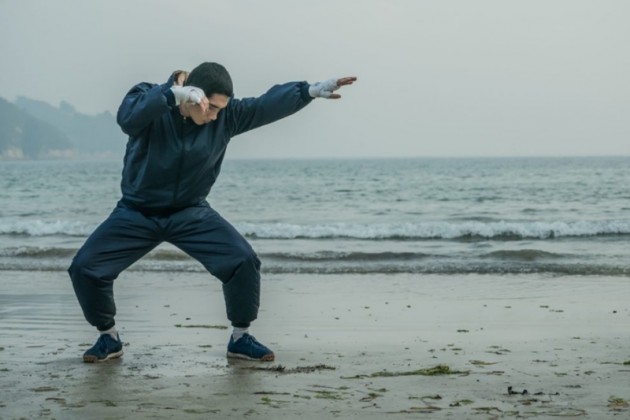
My Punch Drunk Boxer
Alone is a largely effective thriller that finds straight to video action auteur John Hyams trading tense muscles for tense situations. We get thrown almost immediately into its story of a woman stalked and ultimately kidnapped with the film thankfully losing no time doubting her or her suspicions. Those early scenes are fraught and well-built, utilizing the awkwardness of interacting with strangers as a springboard to build tension. Ultimately a lean, mean thriller, that dips its feet in gore and action and respects its heroine’s struggles.
Some films no doubt lost a lot of their power from not being able to be screened in front of your typical Fantasia crowd. This is pure conjecture, but a film like Fried Barry, a bonkers mixture of sci-fi and strung-out aesthetics which certainly has its moments, but can’t keep up the Safdian frenetic pace for its entire runtime would have probably benefited from a few shared groans and belly-laughs. The story of Barry, a ne’er-do-well who after getting abducted and summarily probed by UFOs goes on a drug-fueled spree for the ages through the street of Johannesburg. Bathed in black humour and neon lights and a mean-streak a mile-long, its most unsavoury elements would have no doubt shaken up the Fantasia crowd. But at home it settles for being fitfully entertaining, when it’s not exhausting.
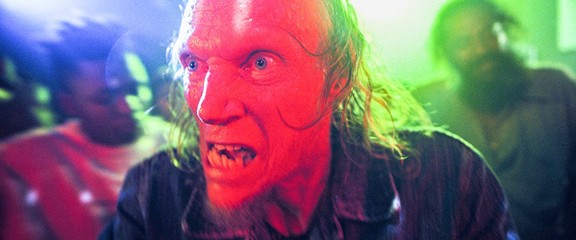
Fried Barry
A similar predicament befell Seafood Wars, a lazy pastiche of Kaiju flicks where the knowing laughs of the audience would have perhaps elevated this middling effort. Alone, it’s mainly unconvincing rubber suits, winkingly stilted acting and a cliched storyline. A pass.
Fantasia also courted nostalgia this year, harkening back to some of its strongest moments and allowing us to cast ourselves back to a vastly different time and bask in the lunacy of classics like Milocroze and Hentai Kamen or discover some gems like the Coffin Joe films. I won’t go over the films in that section, but the ability to cast ourselves back to happier times through the older films offered was a welcome one that I wish the festival might consider bringing back this year, Fantasia’s 25th anniversary.
As always, what stands out at the end of the day are the films, and there were much more which I did not have to space to cover. And whilst this year’s Fantasia was less massive (some unkind souls might say bloated) and had to be moved to the online space, with measures like Discord groups and online Q&As used to recreate the festival experience, there were still films that allowed us to escape or ponder. Films were still there to take us away, even if they dropped us back closer to home than last year. And some films even gained a new poignancy from having to be watched at home, to be shared amidst what is perhaps the single most uniting experience in our lifetime, together, but apart.


